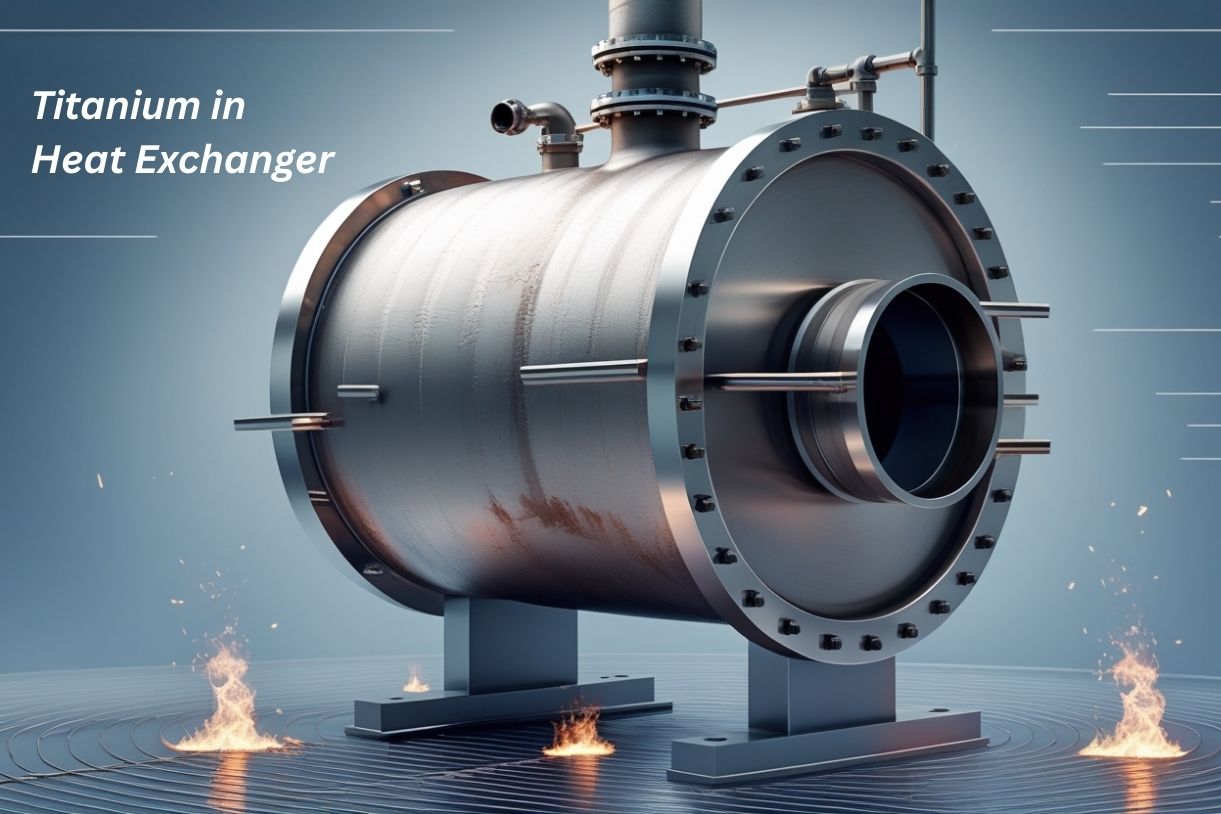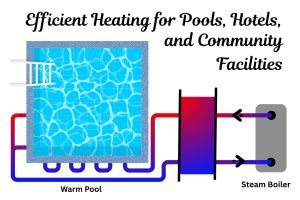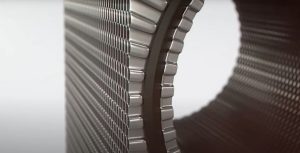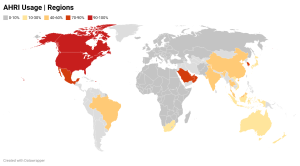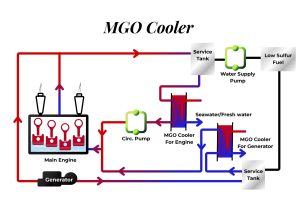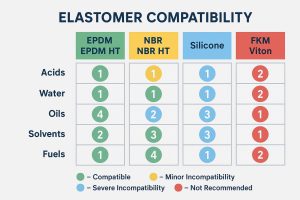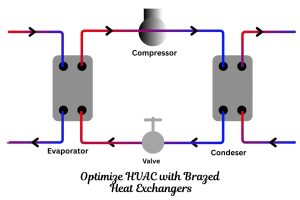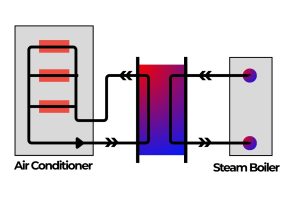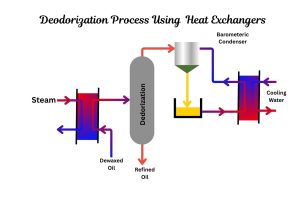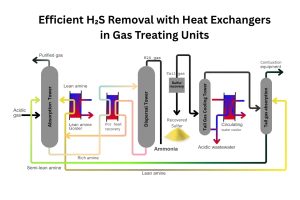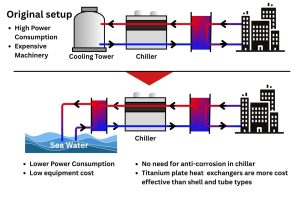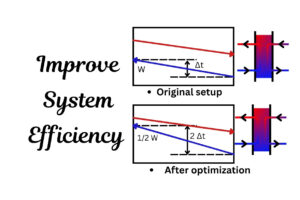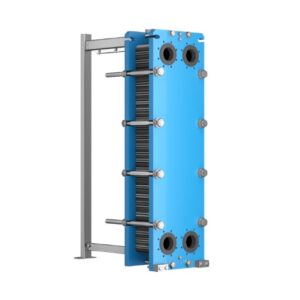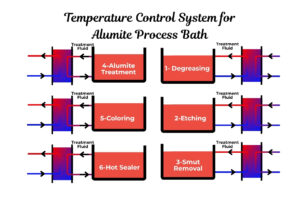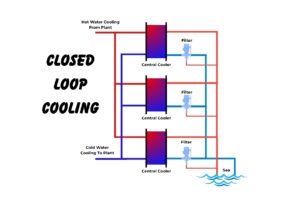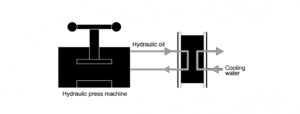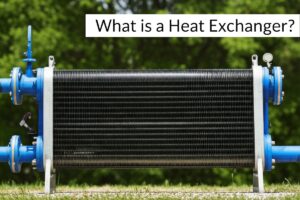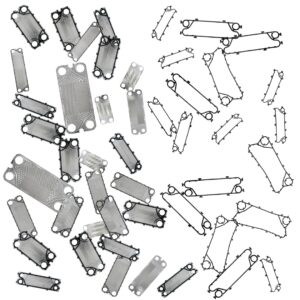Titanium in Heat Exchangers: A Deep Dive into Durability and Efficiency
From the ancient alchemists dreaming of indestructible materials to modern engineers pushing the boundaries of thermal transfer, the quest for superior materials has been a constant. In the world of heat exchangers, where the exchange of heat is critical to countless industrial processes, the material chosen for construction is paramount. While various metals have played their part throughout history, one element stands out for its exceptional properties in demanding environments: titanium.
A Brief History of Heat Transfer Technology: How Did We Get Here?
The concept of transferring heat between two fluids is as old as human ingenuity itself. Early forms of heat exchange were rudimentary, perhaps as simple as using a hollowed-out log to transfer warm air to a dwelling. However, the scientific understanding and industrial application of heat exchange truly began to blossom with the Industrial Revolution.
Initially, simple shell and tube designs dominated the landscape, relying on basic principles of conduction and convection to move thermal energy. These early models, while revolutionary for their time, were often bulky, inefficient, and prone to corrosion, especially when dealing with aggressive fluids or saltwater. The limitations of materials like cast iron and copper quickly became apparent as industries demanded higher efficiencies, smaller footprints, and greater resistance to harsh operating conditions.
The mid-20th century saw significant advancements in metallurgy, leading to the development and widespread adoption of stainless steel. This marked a major leap forward, offering improved corrosion resistance and strength. However, for truly challenging applications – those involving highly corrosive media, extreme temperatures, or aggressive fouling – even stainless steel had its limits. This is where the unique properties of titanium began to shine, paving the way for a new era of high-performance heat exchangers.
What Exactly Are Heat Exchangers and What Do They Do?
At its core, a heat exchanger is a device designed to efficiently transfer thermal energy from one medium to another without necessarily mixing the two. These mediums can be liquids, gases, or a combination of both. Think of it like a sophisticated middleman for temperature, taking heat from where it’s not needed and moving it to where it can be put to good use. This process is fundamental across almost every industry imaginable.
Heat exchangers are required to either heat up or cool down a process to meet specific temperature requirements. For example, in a power plant, they might cool steam to convert it back into water, or in a chemical plant, they might heat a reactant to initiate a chemical process. Any inefficiency in this heat transfer means more energy input is needed from external sources, like furnaces or steam generators, increasing operational costs and environmental impact.
How Do Heat Exchangers Work? The Principles of Thermodynamics
The magic behind heat exchangers lies in the fundamental laws of thermodynamics. These scientific principles dictate how energy, especially heat, behaves when transferred between systems.
- Conduction: Imagine holding a hot metal spoon. The heat travels from the hot end to your hand through the spoon itself. This is conduction – the transfer of thermal energy between materials that are directly touching each other. In a heat exchanger, the material of the plates or tubes acts as a conductor, transferring heat from the warmer fluid to the colder fluid across its solid surface. The rate of conduction depends on the material’s thermal conductivity; metals generally have high thermal conductivity, making them excellent for heat exchanger components.
- Convection: Now, think about how a room heats up when a radiator is on. The air near the radiator gets warm, becomes less dense, and rises, while cooler air sinks to take its place, creating a circulating current. This is convection – the transfer of thermal energy through the movement of a fluid. Within a heat exchanger, fluids are deliberately moved, often rapidly, to facilitate this transfer, a process called forced convection.
- Radiation: This is heat transfer through electromagnetic waves, like the warmth you feel from the sun or a campfire. Unlike conduction and convection, it doesn’t require a medium to travel through. While less dominant in most compact heat exchangers, it still plays a role, especially with very high-temperature differences.
These three modes work in concert within a heat exchanger to achieve the desired thermal exchange.
What are the Different Types of Heat Exchangers?
The world of heat exchangers is vast and varied, with designs tailored to specific applications and fluid characteristics. Here are some of the most common types:
- Shell and Tube Heat Exchangers: These are perhaps the most traditional and widely recognized type, consisting of a bundle of tubes enclosed within a larger cylindrical shell. One fluid flows through the tubes, while the other flows around the outside of the tubes within the shell, facilitating heat transfer. They are known for their robustness and ability to handle high pressures, but they can be large and challenging to clean on the shell side.
- Double Pipe Heat Exchangers: A simpler form of shell and tube, these consist of two concentric pipes. One fluid flows through the inner pipe, and the other flows through the annular space between the two pipes. They are straightforward in design but suitable for smaller heat transfer duties.
- Plate Heat Exchangers (PHEs): These are constructed from multiple thin, corrugated plates pressed together to create a series of parallel channels. The hot and cold fluids flow through alternating channels. The plates can be sealed with gaskets, brazed, or welded. PHEs are highly efficient due to their large surface area and turbulent flow patterns, leading to compact designs. They are easier to disassemble for cleaning and maintenance compared to shell and tube exchangers.
- Gasketed Plate Heat Exchangers: In these, the plates are sealed by rubber gaskets, allowing for easy disassembly for cleaning and maintenance. This makes them versatile for applications requiring frequent cleaning or capacity adjustments.
- Semi-Welded Plate Heat Exchangers: These units feature pairs of plates laser-welded together to form “cassettes,” with gaskets only on the non-aggressive fluid side. This design is ideal for handling aggressive or hazardous media that might degrade traditional gaskets, offering enhanced safety and longer lifespan for challenging duties like industrial refrigeration with ammonia.
- Fully Welded Plate Heat Exchangers (Plate & Shell): Representing the most robust design, these heat exchangers have their entire plate pack fully welded, eliminating all gaskets within the plate pack itself. This makes them suitable for extremely high-pressure and high-temperature applications, as well as highly aggressive media, where traditional gaskets would fail. They offer a compact footprint and superior thermal performance compared to shell and tube units, and are often used in steam heating and condensing duties.
- Free Flow Plate Heat Exchangers: Specifically designed for media containing solids, fibers, or highly viscous fluids, these plates have wider and deeper channels with fewer contact points. This “free flow” design minimizes clogging and allows for gentle treatment of sensitive products. They are commonly found in industries like sugar processing and pulp and paper, where difficult media are common.
- Spiral Heat Exchangers: These are constructed from two long metal plates coiled together to form a spiral. One fluid flows from the center outwards, and the other flows from the outside inwards, creating a natural counter-current flow. They are excellent for handling sludges, slurries, and high-viscosity fluids with a self-cleaning effect due to high shear rates. Their compact design also makes them highly efficient.
- Brazed Plate Heat Exchangers: These compact units consist of corrugated plates brazed together, typically with copper or nickel. The brazing eliminates gaskets, making them highly resistant to high pressures and temperatures. They are often used in refrigeration cycles as evaporators and condensers, and for industrial water heating.
Why Titanium? The Unrivaled Material for Challenging Environments
While stainless steel offers good performance, for environments where corrosion is a persistent threat, titanium emerges as the undisputed champion. Its unique properties make it an ideal choice for a wide range of demanding heat exchanger applications.
- Exceptional Corrosion Resistance: Titanium is virtually immune to a wide array of corrosive media, including seawater, chlorinated water, and many acids and industrial chemicals. This makes it indispensable in marine applications, chemical processing, and other industries where aggressive fluids are present. Unlike stainless steel, which can suffer from pitting and crevice corrosion in the presence of chloride ions, titanium maintains its integrity, leading to significantly longer operational lifespans.
- High Strength-to-Weight Ratio: Despite its robustness, titanium is surprisingly lightweight. This allows for thinner plates to be used, which not only reduces the overall weight of the heat exchanger but also enhances heat transfer efficiency due to the reduced material thickness. This lightweight nature also simplifies installation and reduces structural support requirements.
- Excellent Heat Transfer Properties: While not as thermally conductive as copper, titanium’s exceptional corrosion resistance often outweighs this factor, especially in environments where other materials would rapidly degrade and lose efficiency due to fouling or material loss. Its ability to maintain a clean surface, free from corrosion and significant fouling, ensures consistent and optimal heat transfer over extended periods.
- Resistance to Erosion and Fouling: Titanium’s smooth, passive surface discourages the adhesion of deposits and biological growth, making it inherently more resistant to fouling than many other materials. This characteristic is particularly valuable in applications using raw water sources, like seawater, where marine organisms and debris can quickly reduce efficiency and necessitate frequent cleaning. Furthermore, titanium exhibits good resistance to erosion corrosion, which can be a problem in applications with abrasive slurries or high fluid velocities.
Avoiding Common Mistakes in Heat Exchanger Selection and Operation
Choosing and operating a heat exchanger correctly is crucial for maximizing its lifespan and efficiency. Avoiding common pitfalls can save significant time and money.
1. Inaccurate Data and Design Parameters: The Foundation of Failure
One of the most frequent mistakes is designing a heat exchanger based on incomplete or inaccurate operational data. This includes misjudging fluid properties, flow rates, temperature variations, or the presence of contaminants.
- Solution: Conduct thorough process analysis and characterization of all fluids involved. Provide vendors with comprehensive data on fluid properties (viscosity, density, specific heat, thermal conductivity), operating temperatures and pressures (including maximum and minimum), flow rates, and any potential fouling or corrosive agents. Consider seasonal variations in temperatures if applicable.
2. Ignoring Fouling Characteristics: A Silent Efficiency Killer
Fouling, the accumulation of unwanted substances on heat transfer surfaces, is a primary cause of decreased performance and increased pressure drop. Neglecting the fouling potential of fluids or failing to implement proper mitigation strategies can lead to frequent cleaning cycles and reduced efficiency.
- Solution: Understand the fouling characteristics of your media. For fluids prone to fouling, consider heat exchangers with wider channels (like free flow designs) or materials like titanium that are less susceptible to adhesion. Implement effective cleaning-in-place (CIP) procedures or consider mechanical cleaning methods during scheduled maintenance. Installing inline filters or strainers can also prevent larger particulates from entering the unit and causing blockages.
3. Improper Material Selection: A Recipe for Corrosion and Early Failure
Choosing a heat exchanger material that is not compatible with the process fluids can lead to premature corrosion, leaks, and costly replacements. This is especially critical with aggressive chemicals or corrosive water sources.
- Solution: Always select materials, including plate and gasket materials, based on their compatibility with all media involved, considering temperature, pressure, and chemical composition. For highly corrosive applications, titanium is often the superior choice due to its inherent resistance. Regularly check gasket compatibility and replace them at recommended intervals.
4. Incorrect Installation and Startup Procedures: Setting Up for Problems
Many operational issues stem from improper installation or deviations from recommended startup and shutdown procedures. This can lead to issues like hydraulic hammering, uneven flow distribution, or gasket dislocation.
- Solution: Adhere strictly to the manufacturer’s installation and operating manuals. Ensure proper alignment of components, correct tightening of bolts, and gradual opening of valves during startup to prevent sudden pressure surges. Verify correct plate arrangement during assembly. Proper training for operators is also essential.
5. Neglecting Regular Maintenance: A Shortened Lifespan
Ignoring periodic inspection, cleaning, and replacement of consumables like gaskets can lead to a gradual decline in performance and eventual system failure. Scale buildup and gasket deterioration are primary culprits.
- Solution: Implement a proactive maintenance schedule based on manufacturer recommendations and operational conditions. This includes regular visual inspections for damage or wear, timely cleaning to remove deposits, and replacing gaskets before they lose elasticity or crack. Utilizing advanced condition monitoring systems can also help detect potential issues early.
Applications of Heat Exchangers Across Industries
Heat exchangers are the silent workhorses behind countless industrial processes, touching almost every aspect of modern life. Here are just a few examples of their diverse applications:
- HVAC Industry: From heating and cooling buildings to managing temperature in large commercial spaces, heat exchangers are fundamental. They are used in district heating and cooling systems, air conditioning, and heat recovery units.
- Marine/Offshore Industry: Given the corrosive nature of seawater, titanium plate heat exchangers are indispensable in central cooling, lubrication oil cooling, and other heat transfer duties on vessels and offshore platforms. They handle challenges like seawater filtering and preventing marine growth.
- Dairy/Food/Beverage Industry: Maintaining hygiene and product integrity is paramount here. Heat exchangers are used for pasteurization, sterilization (like UHT processes), heat recovery, and cooling various food products like milk, cream, juices, and syrups. Free flow plate heat exchangers are particularly useful for viscous liquids or those with pulp.
- Sugar Industry: From sugarcane to sugar beet processing, heat exchangers are crucial for heating and cooling juices, syrups, and molasses at various stages of purification, concentration, and crystallization. Free flow designs are often preferred due to the presence of fibers and particles in these media.
- Chemical Industry: This is a vast field where heat exchangers are central to a multitude of processes, including waste heat recovery, condensing, evaporation, and heating or cooling aggressive chemicals, acids, and solvents. Semi-welded and fully welded units are frequently employed for hazardous or corrosive media.
- Power Generation: In power plants, heat exchangers are vital for steam generation, condensing steam from turbines, cooling systems, and heat recovery from exhaust gases.
- Pulp & Paper Industry: Handling fibrous materials and wastewater, heat exchangers are used for heat recovery from waste streams, heating and cooling various process liquids, and applications involving high-viscosity media. Free flow plate heat exchangers are particularly well-suited for these applications.
- Metallurgy and Mining: Heat exchangers play a role in cooling circulating water for furnaces, continuous casting equipment, and hydraulic and lubricating oils in rolling mills. Titanium heat exchangers are ideal for seawater cooling duties in these sectors.
Sourcing Materials: The Core of Quality Heat Exchangers
The performance and longevity of a heat exchanger are intrinsically linked to the quality of its components, particularly the plates and gaskets. Sourcing these materials from reputable manufacturers is crucial.
Plate Materials: Engineering for Efficiency
Heat exchanger plates are typically manufactured from thin sheets of corrosion-resistant metals. The choice of material depends heavily on the specific application, the nature of the fluids, and the operating conditions.
- Stainless Steel (AISI 304, AISI 316, 315J1, 317, SMO254): These are widely used due to their good balance of corrosion resistance, mechanical strength, and cost-effectiveness. Different grades offer varying levels of resistance to specific corrosive agents. For instance, AISI 316 and SMO254 offer enhanced corrosion resistance compared to AISI 304, especially in chloride-containing environments.
- Titanium (TP270, Gr.1): As discussed, titanium is the go-to material for highly corrosive environments, particularly those involving seawater, chlorides, or aggressive acids. Its superior corrosion resistance ensures a longer lifespan and sustained performance in demanding applications.
- High Nickel Alloys (C-276, C-22, Hastelloy, NNCP, NLCP): These exotic materials are reserved for the most extreme corrosive conditions, offering exceptional resistance where even titanium might face challenges.
The manufacturing process for these plates is highly specialized, involving precision pressing techniques to create the intricate corrugated patterns that maximize heat transfer efficiency.
Gasket Materials: The Unsung Heroes of Sealing
Gaskets are critical for sealing the plate pack and preventing internal and external leakages. Their material selection is as important as the plates, as they must withstand the fluids’ chemical properties and operating temperatures and pressures.
- NBR (Nitrile Butadiene Rubber): A common choice for general-purpose applications, especially with oils and non-aggressive fluids.
- EPDM (Ethylene Propylene Diene Monomer): Excellent for hot water, steam, and many chemicals, offering good heat and chemical resistance. New-EPDM variations offer extended lifespan and improved resistance.
- FPM (Fluorocarbon Rubber, e.g., Viton): Used for more aggressive chemicals and high-temperature applications where NBR or EPDM might not be suitable.
- PTFE Cushion Gaskets (TCG): These offer outstanding chemical resistance and are ideal for highly corrosive fluids where conventional rubber gaskets would fail. The design allows for lower tightening torque, reducing the risk of plate deformation.
The lifespan of gaskets is influenced by operating temperature and the aggressiveness of the media, requiring periodic replacement.
Common Problems and Troubleshooting Tips for Heat Exchangers
Even with the best materials and designs, heat exchangers can encounter issues. Understanding common problems and how to troubleshoot them is key to maintaining operational efficiency and preventing costly downtime.
1. Decreased Heat Transfer Performance: The Silent Drop in Efficiency
This is often the most noticeable symptom, where the heat exchanger no longer achieves the desired temperature change.
- Possible Causes:
- Fouling: Accumulation of deposits (scale, algae, particles) on the heat transfer surfaces. This narrows the plate gaps and insulates the plates, reducing heat transfer.
- Incorrect Flow Rates: Operating outside design flow rates can lead to reduced turbulence or maldistribution, impacting efficiency.
- Air in the System: Air pockets can act as insulation, hindering heat transfer.
- Plate Defects: Corrosion, erosion, or cracks on the plates can reduce the effective heat transfer area or cause internal leakage, mixing fluids.
- Troubleshooting:
- Check for Fouling: Visually inspect plates if possible, or run a CIP (Cleaning-in-Place) cycle. Mechanical cleaning may be necessary for stubborn deposits.
- Verify Flow Rates: Ensure actual flow rates match design specifications.
- Vent Air: Ensure all air is expelled from both fluid sides of the heat exchanger.
- Inspect Plates: If performance remains low after cleaning, a hydrostatic test may be needed to check for internal leaks or plate damage. Consider upgrading plate material if corrosion is a recurring issue.
2. Increased Pressure Drop or Decreased Flow Rate: The Obstruction Problem
A sudden or gradual increase in pressure drop across the heat exchanger, or a noticeable decrease in fluid flow, points to an obstruction.
- Possible Causes:
- Clogging: Foreign materials (debris, fibers, large particulates) blocking the port holes or narrowing the plate channels. This is particularly common in free flow heat exchangers designed for challenging media, but even standard units can suffer.
- Fouling: Severe fouling can significantly restrict flow paths.
- Undertightened Plate Pack: An insufficiently tightened plate pack can cause flow maldistribution and increased pressure drop.
- Troubleshooting:
- Inspect for Blockages: Check inlet strainers and port holes for large debris. Backflushing may help.
- Clean the Unit: Perform chemical or mechanical cleaning to remove deposits.
- Check Tightening Length: Ensure the plate pack is tightened to the manufacturer’s recommended dimensions. Do not overtighten, as this can damage gaskets and plates.
3. External Leakage: The Visible Sign of Trouble
Leaks from between the plates or from the frame itself are clear indicators of a problem.
- Possible Causes:
- Aged or Damaged Gaskets: Gaskets harden, crack, swell, or lose elasticity over time, leading to leakage. Incompatible cleaning liquids or process media can also cause gasket swelling or dissolving.
- Improper Gasket Installation: Gaskets not correctly seated in their grooves or improperly glued (for glued types) can lead to leaks.
- Hydraulic Hammering/Pressure Surges: Sudden pressure spikes can deform plates or dislodge gaskets, causing leaks.
- Plate Deformity/Damage: Bent, cracked, or corroded plates can compromise the sealing integrity, leading to leaks.
- Insufficient Tightening: An undertightened plate pack may not properly compress the gaskets, leading to external leaks.
- Troubleshooting:
- Inspect Gaskets: Look for visible cracks, hardening, swelling, or dislocation. Replace damaged gaskets.
- Check Tightening: Ensure the heat exchanger is tightened to the correct dimension.
- Review Operations: Investigate for pressure spikes or sudden valve closures in the system.
- Re-gasketing/Reconditioning: For widespread gasket issues, re-gasketing or full reconditioning of the plate pack may be necessary.
- Plate Inspection: If gasket issues are ruled out, plates may need inspection for damage.
4. Internal Leakage/Media Intermixing: The Hidden Contamination Risk
This is a critical issue where the two process fluids mix, leading to product contamination or hazardous situations. This type of leak is usually not immediately visible.
- Possible Causes:
- Plate Cracks/Pinholes: Corrosion or fatigue cracking can create tiny holes in the plates, allowing fluids to mix.
- Damaged Double Seals: In some designs, double seal gaskets or plates with drain zones are meant to prevent mixing by directing leaks externally, but if these safety features are compromised, internal mixing can occur.
- Troubleshooting:
- Hydrostatic Test: Perform a hydrostatic test with the unit assembled to identify the location of the internal leak (look for bubbling).
- Plate Replacement: The affected plates must be replaced.
- Material Upgrade: Consider upgrading to more corrosion-resistant plate materials if cracking is due to chemical attack.
- Prevent Pressure Spikes: If fatigue cracking is suspected, analyze and mitigate pressure surges in the system.
Heating Formula: Your Partner in Heat Exchanger Excellence
At Heating Formula, we understand the critical role heat exchangers play in your operations. We specialize in supplying high-quality heat exchanger units and spare parts, equivalent to OEM standards, for leading brands. Whether you’re looking for replacement plates, gaskets, or a complete unit, we offer reliable solutions to keep your systems running efficiently.
We pride ourselves on providing parts that meet or exceed original specifications, ensuring seamless compatibility and long-lasting performance. Our extensive inventory covers a wide range of models, making us a comprehensive source for your heat exchanger needs.
For expert selection guidance, explore our Heat Exchanger Selection page. If you need specific spare parts, visit our Spare Parts page. Have questions or need a quote? Don’t hesitate to contact us. Our team is ready to assist you in finding the perfect solution for your thermal transfer challenges.
FAQ
What are the primary advantages of using titanium in heat exchangers? A1: Titanium offers exceptional corrosion resistance, especially to seawater and chlorides, a high strength-to-weight ratio allowing for thinner plates, and good resistance to fouling and erosion. These properties lead to longer operational lifespans and consistent performance in demanding environments.
How often should gaskets in a plate heat exchanger be replaced? A2: The replacement frequency for gaskets depends on the operating temperature and the aggressiveness of the media. As a general guideline, for temperatures above 100circC, replacement is recommended every 1-3 years. For temperatures between 30circC and 100circC, it’s typically every 5-7 years, and for temperatures below 30circC, within 7-10 years. Always consult the manufacturer’s recommendations and regularly inspect gaskets for signs of wear, cracks, or hardening.
What is “fouling” in a heat exchanger and how can it be prevented? A3: Fouling is the accumulation of unwanted deposits (like scale, algae, or particles) on the heat transfer surfaces, which reduces efficiency and increases pressure drop. Prevention methods include regular cleaning (chemical or mechanical), installing inline filters or strainers to remove particulates, optimizing flow rates to promote turbulence, and using materials like titanium that are less prone to deposit adhesion.
Can a heat exchanger’s performance be restored after it has fouled? A4: Yes, in most cases, a heat exchanger’s performance can be significantly restored after fouling. This typically involves chemical cleaning (Cleaning-in-Place or soaking) or mechanical cleaning to remove the accumulated deposits. Regular cleaning cycles are recommended to maintain optimal performance over the unit’s lifespan.
What are the main differences between a gasketed and a fully welded plate heat exchanger? A5: A gasketed plate heat exchanger uses rubber gaskets to seal between plates, allowing for easy disassembly for cleaning and maintenance. A fully welded plate heat exchanger has its entire plate pack welded, eliminating all internal gaskets. This makes it suitable for higher temperatures, pressures, and aggressive media, but it cannot be opened for mechanical cleaning. Cleaning of fully welded units is typically done with Cleaning-in-Place (CIP) systems.
What should I do if I suspect internal leakage (media intermixing) in my heat exchanger? A6: If you suspect internal leakage, it’s crucial to act quickly to prevent contamination or hazardous situations. The recommended first step is to perform a hydrostatic test with the plates installed in the unit. By pressurizing one side and observing the opposing port hole for bubbling water, you can locate the leak. The damaged plates must then be replaced. It’s also wise to investigate the cause (e.g., corrosion, pressure spikes) to prevent recurrence and consider upgrading plate material if necessary.
